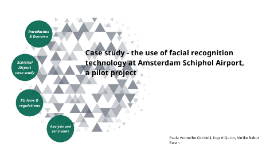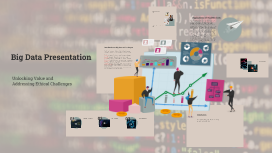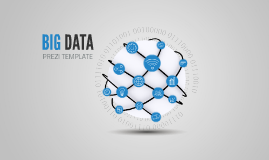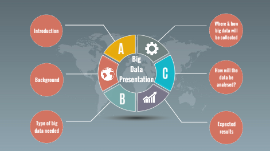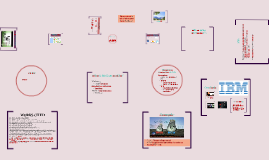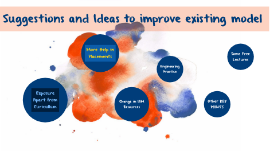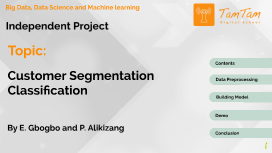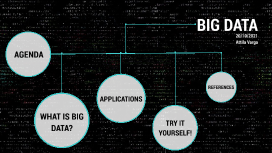Big Data Presentation
Transcript: Big Data Relating to Course Work Big data enters into the fourth industrial revolution that includes agile governance, inequality, security and conflict, innovation and productivity, ethics and identity, business disruption, disruption to job and skills, and fusing technologies. A breakdown of data: Data lives in warehouses and storage farms and it collects, propagates and breeds new data as well as aligns patterns to create intelligent predictions. There are a lot of true data assumptions about the way your information is used. For example: 49% of American adults who use the internet incorrectly believe that by law a supermarket must obtain a person's permission before selling info about that person's food purchases. Applications of Big Data Cont. Applications of Big Data and Impacts of Giving Data When data gives us something, we probably don't think about what it takes from us in return. Data gives us: - social networks, mapping services, ability to make calls, moble apps to control homes, shopping, voice control, genetic cataloging, and much more. However, data also takes from us: - facial recognition, blood testing, medical info, movement tracking, and associative behavior. Applications of using Big Data are all around. A very common application of Big Data is in healthcare. Big Data analytics have improved healthcare industries. They have succeeded in doing so by providing personalized medicine and perscriptive analytics, and researching what kind of treatments are more effective for certain conditions and with that they have identified patterns related to drug side effects and provide a solution at a reasonable cost. eHealth and mHealth also increase the volume of data which includes electronic health records, fitness trackers, research data, etc. A real world example of using big data in clinical analytics is when healthcare industries wanted to replace the data warehousing solution with one that could manage high volumes of data. In order to do this, they hired Citius Tech in which they designed a solution. It injects diagnostic results and billing messages into the data injestion stream undergoing Apache Spark Streaming which produces real time data streams. These records are landed onto the cloud where it undergoes deduplicating and standarization of the data. It is then processed using MapReduce for processing of data. Finally, it populates and stores the messages into a IBM unified data model for healthcare organizations. Introduction to Big Data and Its Impact Big Data Presentation Big Data is referred to as large volumes of data both structured and unstructured, that inundate a business on a day-to-day basis. It's not the amount of data that's important, but what organizations do with it. Big data can be analyzed for insights that lead to better decisions and strategic business moves. Big data can have a significant impact across various areas, including: Business: Big data analytics can help businesses understand customer behavior, improve operational efficiency, and identify new marke opportunities. Healthcare: it can enhance patient care by analyzing medical records, identifying disease patterns, and predicting outbreaks. Finance: Big data can improve risk management, fraud detection, and customer service in the financial sector. Transportation: It can optimize routes, reduce congestion, and improve safety in transportation systems. Education: Big data analytics can personalize learning experiences,track student progress, and identify areas for improvement. Government: it can improve public services, optimize resource allocation, and enhance decision making in policy development. Science and Research: Big data enables researchers to analyze large datasets, discover new patterns, and make breakthroughs in fields like genomics, climate science, and astronomy. Overall, big data has the potential to revolutionize various aspects of society by providing valuable insights and driving innovation. Conclusion Put something important here Summarizing Key Takeaways and Lessons Learned Provide more context here Unlocking Value and Addressing Ethical Challenges Conclusion Challenges & Opportunities 02 Cases & Applications Ethical Considerations 01 03 Addressing ethical considerations and implications of big data usage. Sum up the key take-aways and wrap up your presentation Examining relevant cases and applications of big data in various sectors. Analyzing ethical challenges and unlocking the value and opportunities of big data.






